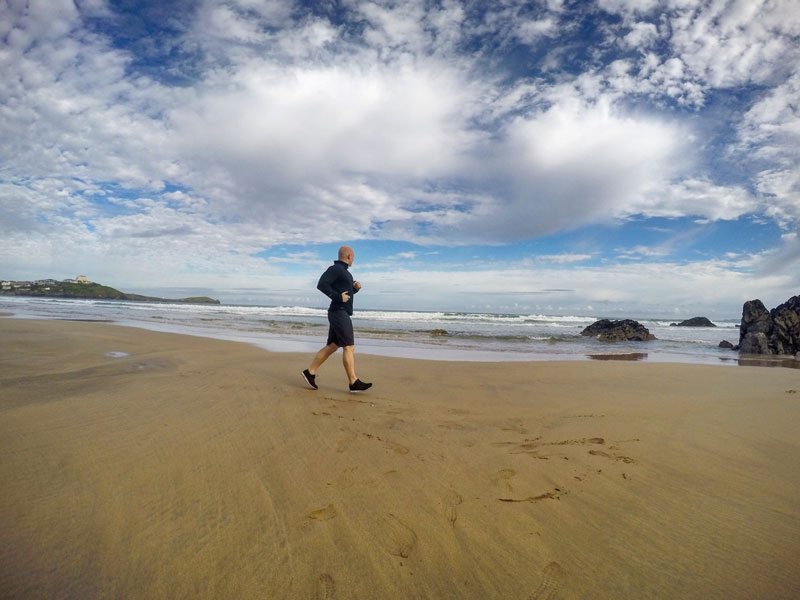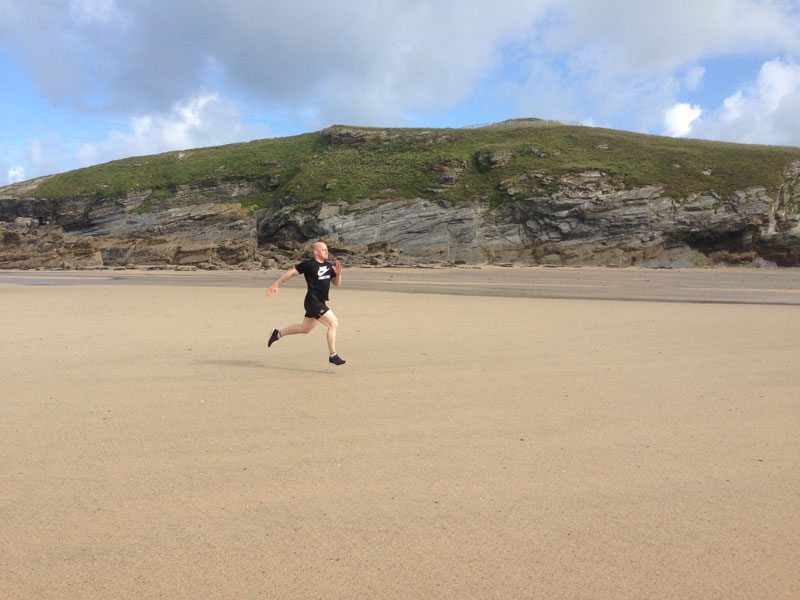Written By Lee Murrin
Sprinting for Fat loss, Fitness and Fun
Sprinting has been a key training method with many of my clients, read through my new sprinter tips to “speed up” your training results!
One of the most rewarding, body strengthening, muscle-building, fat burning modes of exercise that many people leave out of their training.
It’s tough I know, it makes you breathless, I know, ……your lungs and legs burn.
I know, great isn’t it?
Sprinting is highly effective for your nervous and hormonal systems, building muscle, aerobic and anaerobic fitness, and firing up the fat burning furnace.
You can set up anywhere, and when consistently done sprinting gets great results.
Best of all, rather than being sat on a bike in the gym or walking on a treadmill watching TV, sprinting actually tests you, and is an exhilarating fun way to train.
Sprinting is awesome, and when done correctly the long-term health benefits far outweigh any short-term physical exertion you may need to go through.
In the rest of this article, I give you some great new sprinter tips.
Interested? On your marks, get set ……………. read on
Fire up the engines
Being warm and ready is crucial for your chance of winning a fat burn gold medal!
If you haven’t sprinted since sports day ten years ago, I highly recommend a slow and steady approach to building up your sprint prowess.
I’m going to assume that you’re doing some form of exercise already, if not and you haven’t exercised for a while, gradually increase your activity and load on your body before you start sprinting.
The warm-up/firing-up the engines is just as important as the activity itself if you’re cold or un-conditioned for the speed you could hurt yourself before you get any of the benefits.
Sprinting is a full body movement, and to do it efficiently requires the whole body to be warm, loose and prepared for the session ahead.
Sprint warm up
A good warm-up needs to consist of a few dynamic bodyweight exercises:
• Jogging on the spot
• Leg swings front, back, side to side
• Skips
• Body weight squats
• Step Ups
• Side to side shuffle
• Jumping jacks
• Walking lunges
• High Knees
• Butt kicks
• Hip Openers
• Jogging
• Mountain climbers
Some of the best warm-up drills are the most basic ones.
My new sprinter tips warm up isn’t anything fancy.
Think back to your PE lessons, many of those old school exercises are now called a dynamic warm-up, taking yourself through these gradually building up the size of the movements is the perfect way to start.
Extra New Sprinter Tip:
Fire up the engines a little bit more.
I cannot emphasize enough, that you must be very warm before you start any kind of sprint drills.
The warm-up and prep work for your session could easily be as long as the session itself.
Take a good 10-15 minutes of warm-up time, increasing the range and intensity of the movements until you’ve built up a sweat.
Great, now that you know how to warm up and decrease your chances of injury it’s time to find your track.
Set up your Olympic track
“How on earth am I supposed to get access to the track”? I hear you say.
Well if you’re buddies with Usain Bolt and can arrange to meet him at the track, fantastic.
If not I’ve got good news, a football field, farmers field, hills, tennis court, flat walking track, beach or park, all give you the perfect environment for sprints and sprint variations.
It’s the intensity, power, short bursts and positive exercise stress on your body systems that are key to the session itself and the results you wish to gain, not the Olympic track.
Another advantage of incorporating sprinting into your training is it’s easy to set up.
A great option when travelling or away without access to a gym or training facility.
Remove any dangerous obstacles, check for small potholes or uneven ground, if you choose the farmer’s field remove all cow pats! (or run through them)
If you can find a hill and think it’s steep enough and long enough to have you out of breath by the time you reach the top, it’s a great track.
On the beach, in the park, the local sports field, on the court, it’s too easy to find a place to hit some sprints and make it part of your routine.
Don’t over think it.
My personal favourites are beach and hill sprints.
Gradually raise your game
Once you hit your first sprint the aim will be to get totally out of breath in 20 seconds or less.
True measures of your fitness levels in future weeks is going to be improvements in recovery between these sprints.
A gradual increase in speed, distance, and volume, with recovery and different training methods on other days, is the key to staying injury free and getting the most from your session.
Therefore popping on your plimsolls and smashing out 10 x 100m sprints with 1-minute recovery on the first session is not a wise move.
That amount of volume, distance and recovery right away is unrealistic and unsafe.
So what should you do?
Jog and sprint with a gradual build-up of distances and intensity, aim for a level of 7/8 out of 10 for effort/intensity.
This will be enough to give you an enjoyable testing workout, whilst still allowing your muscles, joints and nervous system time to recover.
Build up to 5 or 6, 10-meter sprints with fast jogging in and out of each 10-meter.
Then cool down with gentle jogging bringing down the heart rate, and finish.
Over the next few days see how you feel and how your body has reacted.
When all is good and your recovery is good, increase the distance to 20 metres but keep the volume to 5/6 sprints with gradual jogging in and out of the sprint again.
I would recommend at least one rest day between each of your sprint days and build the distance to 50 metres over 4-6 weeks, then learn to control the intensity of your sprint at that distance.
This will be tough and a very good achievement if you haven’t sprinted or trained at this level before.
Depending on your ability you’re going to have to ease your way into sprinting.
Even when you feel more accomplished and the body is recovering well, it’s wise to stay 80% of top speed, running at 100% can often bring more risk than reward.
Then pump the brakes and recover
At the end of each sprint make sure you decrease into a jog rather than a sudden stop, you will be less likely to injure yourself this way, rather than slamming on the brakes.
Rest periods will become shorter the more accomplished you become.
New sprinters tips training goal is to keep your heart rate elevated, but you don’t want to rest so little that you become too fatigued and the session turns into breathless jogging.
Insufficient recovery between sprints can cause you to compensate for tired muscles, reinforce bad running mechanics and if you’re very unlucky, cause a muscle pull.
Recovery periods in sprint training are just as important as when you are unleashing your speed.
If you were training for speed like a professional athlete you might be recovering for up to five minutes between each set.
Those guys & girls run longer distances at a much higher intensity and then need their nervous system to recover.
This article of new sprinter tips is more for beginners fat loss, fitness, and fun.
So keep the rest periods a bit lower 2 minutes max is good.
Keep a training diary with measurement of the distances you run and the recovery between each set.
A great tool for you to see the increases in your fitness levels and recovery.
Practice Technique
I’ve already mentioned the importance of braking gradually to avoid injury and jogging in and out of each sprint.
There is no need to get overly technical for you to get the benefits of sprint training from my new sprinter tips.
But there are a few extra points I will add.
All out speed to win the 100m is not the priority so starting from the blocks won’t be necessary.
Instead, as I have already mentioned use flying starts, meaning you start by running at less than your maximal speed and work your way up to sprint speed.
• Keep the face relaxed.
• Chest up.
• Avoid rotation through the hips and torso, make sure they face forward.
• Hands open and the arms bent slightly.
• Pump the arms, driving the elbows forward and backwards, a massive amount of sprint power comes from the shoulders and torso which is why it’s great for full body conditioning.
• Drive the knees high and be sure that the foot strikes directly under your hip ideally (although, on a hill, this may be slightly different depending on the incline).
• Only the front portion of the foot should strike the ground; the heel should never make contact when you are hitting your sprint speed, this is important for your speed efficiency and to avoid injury by minimising force on the body.
Whether the goal is to drop fat, increase muscle, strengthen muscles and joints,
strengthen mindset, core strength, or enjoy the physical activity you do,
sprinting is a fantastic option.
So go with the intention of enjoying whatever you do.
Avoid over thinking optimal running distances, perfect rest periods, spiked shoes and the Olympian meal plan.
Follow the new sprinter tips because you’re taking positive steps for physical and mental health.
As long as you feel warm and well prepared for the session and don’t overdo the duration, sprints will bring challenging enjoyable training and fat burning success.
I cannot promise you will look like an Olympic sprinter, but given time to adjust and improve you will see your sprint times decrease with your waistline.
Travel.Train.Explore
Next readhttps://fitnessworldexplorer.com/step-up-your-fat-loss-with-step-running/
Let me know how you get on.
Lee
About the author
Lee Murrin
The Personal Trainer and Worldwide Traveller behind Fitness World Explorer.
He has worked in his passion as a Personal Trainer and coach for 16 years. His travels have taken him worldwide to 78 different countries on many adventures. He estimates he has sprinted on over 102 different beaches, 74 farmers fields and 47 supermarket car parks.
[email protected]






